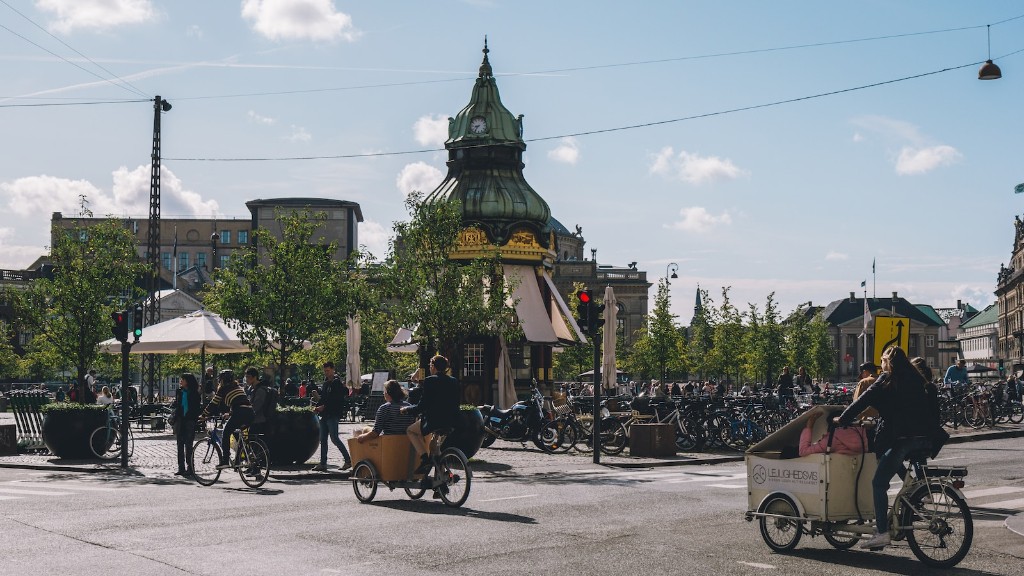Where is the Border between Denmark and Sweden?
Denmark and Sweden are two neighboring countries in Northern Europe, each with its unique history, culture, and language. The border between these two countries has experienced various changes throughout history, shaping the lives of the people living in the region. In this article, we will explore the location of the border today, its historical context, and perspectives from experts.
The Border Today
The border between Denmark and Sweden is located in the Øresund region, connecting the Danish capital of Copenhagen with the Swedish city of Malmö. It stretches approximately 4 kilometers (2.5 miles) and consists of a combination of land and water areas. The central part of the border runs through the Øresund Strait, separating the two countries.
On the Danish side, the border is marked by physical structures such as fences and checkpoints, ensuring proper control and regulation of cross-border activities. In contrast, the Swedish side is characterized by a more open border design, allowing for easy movement and integration between the two countries.
The border between Denmark and Sweden holds strategic importance as it serves as a gateway for trade, tourism, and cultural exchange between the two countries. The Øresund Bridge, a major infrastructure project completed in 2000, has further facilitated the connection between the Danish and Swedish coasts, fostering economic cooperation and regional development.
Historical Context
The history of the border between Denmark and Sweden is complex and influenced by various political and territorial disputes. The border has shifted multiple times throughout the centuries, reflecting the changing power dynamics in the region.
During the medieval period, Denmark and Sweden were united under the Kalmar Union (1397-1523), breaking apart when Sweden sought to assert its independence. This led to conflicts and wars that influenced the positioning of the border.
One significant landmark in the history of the border is the Treaty of Roskilde in 1658, where Denmark ceded several territories to Sweden, including parts of present-day Scania, Halland, and Blekinge. This marked a major territorial loss for Denmark and established the border closer to its current location.
Subsequent wars and treaties have further shaped the border, with minor adjustments made in the early 19th century and a more formal delimitation carried out in 1957. Since then, the border has remained relatively stable, allowing for peaceful coexistence and collaboration between the two countries.
Perspectives from Experts
Experts on border studies emphasize the close cooperation and integration between Denmark and Sweden, highlighting the border’s role as a symbol of unity rather than division. They argue that the border serves as a productive space where people, goods, and ideas flow freely, contributing to regional development and cultural exchange.
Additionally, experts point out that the border between Denmark and Sweden represents a unique case of cross-border governance and collaboration. The Øresund region is governed by the Øresund Committee, a joint intergovernmental organization that aims to promote cooperation and address common challenges in the region, illustrating the strong ties between the two countries.
My Insights and Analysis
When considering the border between Denmark and Sweden, it is essential to recognize the benefits it brings to both countries. The border acts as a bridge rather than a barrier, facilitating economic growth, cross-border employment, and cultural exchange.
The Øresund region, with its vibrant cities and diverse industries, thrives on the interconnectedness between Denmark and Sweden. The border’s location and design allow for the seamless movement of people and goods, contributing to the region’s prosperity.
Furthermore, the border serves as a reminder of the shared history and deep-rooted connections between Denmark and Sweden. It is a testament to the ability of neighboring countries to coexist peacefully and find common ground while respecting each other’s sovereignty.
In conclusion, the border between Denmark and Sweden lies in the Øresund region, connecting the cities of Copenhagen and Malmö. It reflects a history of territorial disputes and wars but now stands as a symbol of integration and cooperation between the countries. The border’s strategic location and design support economic growth, cultural exchange, and cross-border governance. The Øresund region showcases the power of neighboring countries to transcend boundaries and build fruitful partnerships.



